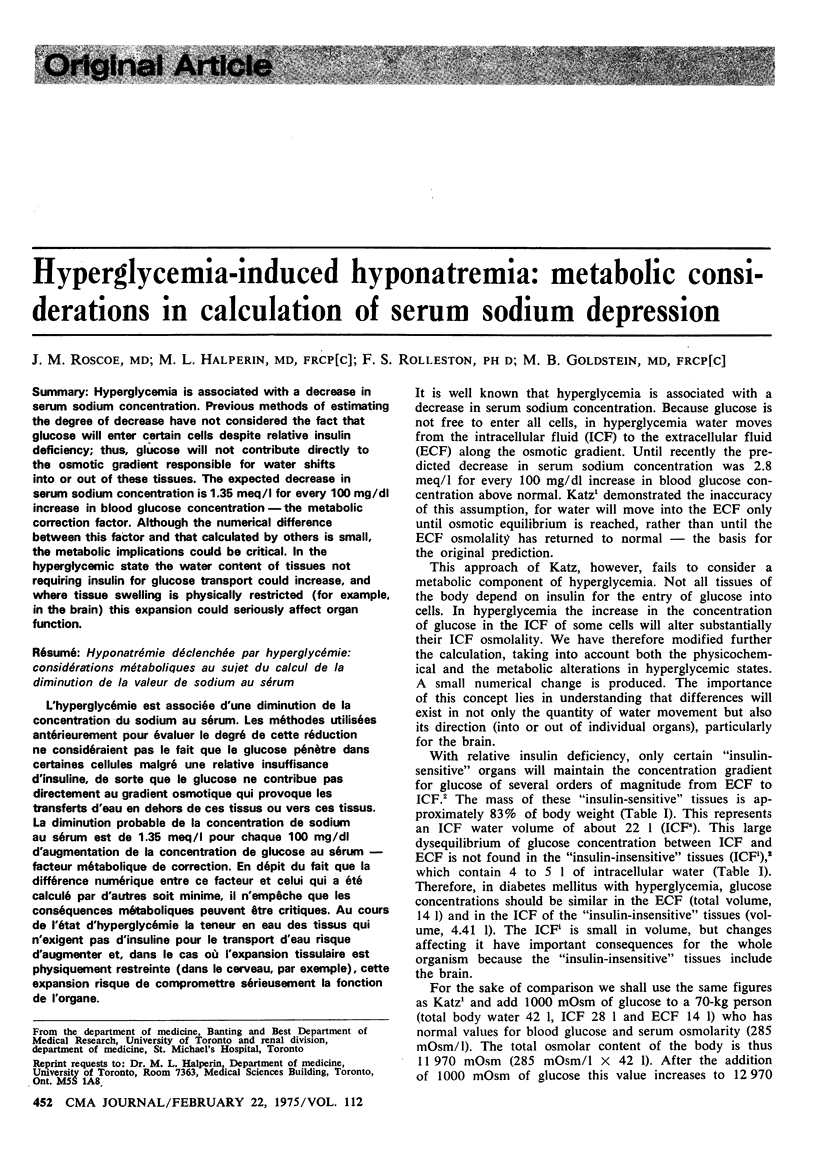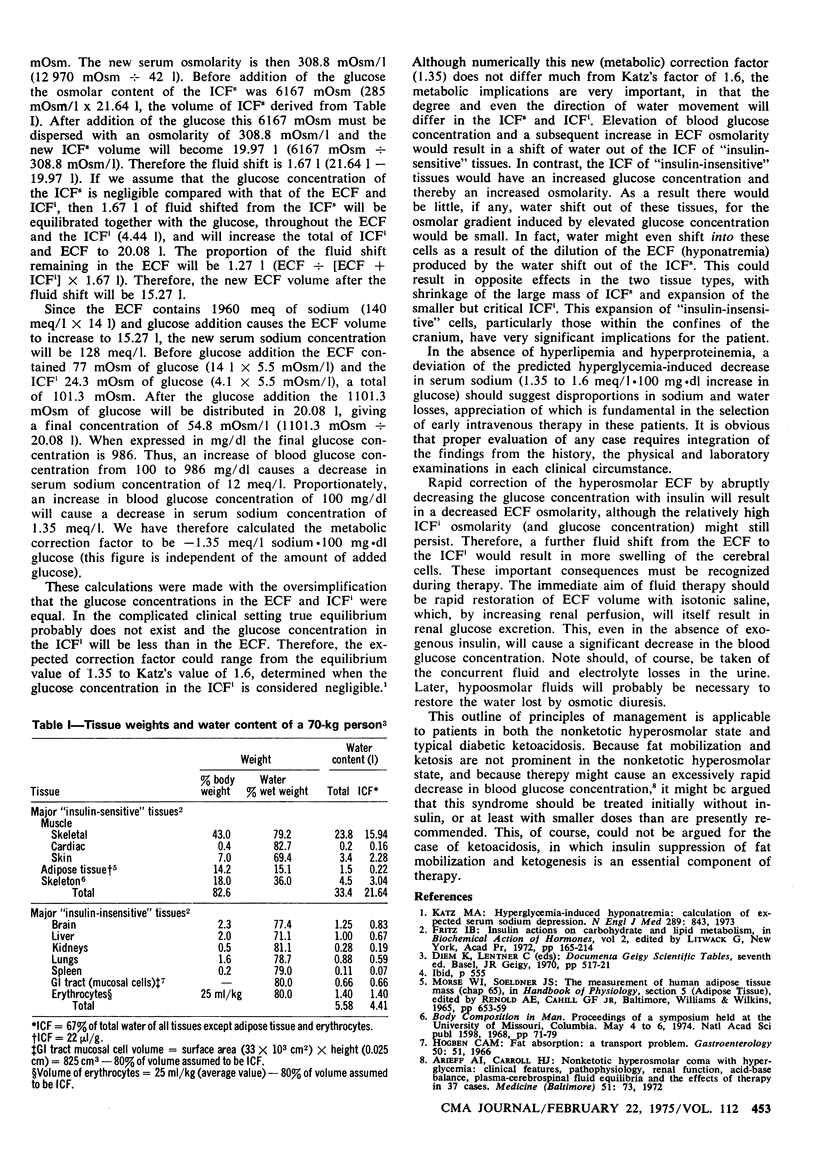Abstract
Hyperglycemia is associated with a decrease in serum sodium concentration. Previous methods of estimating the degree of decrease have not considered the fact that glucose will enter certain cells despite relative insulin deficiency; thus, glucose will not contribute directly to the osmotic gradient responsible for water shifts into or out of these tissues. The expected decrease in serum sodium concentration is 1.35 meg/l for every 100mg/dl increase in blood glucose concentration - the metabolic correction factor. Although the numerical difference between this factor and that calculated by others is small, the metabolic implications could be critical. In the hyperglycemic state the water content of tissues not requiring insulin for glucose transport could increase, and where tissue swelling is physically restricted (for example, in the brain) this expansion could seriously affect organ function.
Full text
PDF

Selected References
These references are in PubMed. This may not be the complete list of references from this article.
- Hogben C. A. Fat absorption: a transport problem. Gastroenterology. 1966 Jan;50(1):51–55. [PubMed] [Google Scholar]
- Katz M. A. Hyperglycemia-induced hyponatremia--calculation of expected serum sodium depression. N Engl J Med. 1973 Oct 18;289(16):843–844. doi: 10.1056/NEJM197310182891607. [DOI] [PubMed] [Google Scholar]


